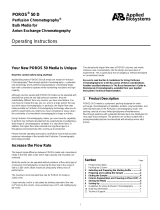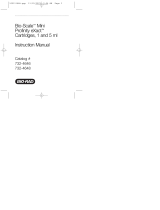
1 Definitions and Writing Conventions ................................................................ 4
2 Safety and Hazards ..............................................................................................6
2.1 Hazards ....................................................................................................................... 6
2.2 Storage .......................................................................................................................8
2.3 Disposal .......................................................................................................................8
3 Introduction to Size Exclusion Chromatography ........................................... 9
3.1 Overview ..................................................................................................................... 9
3.2 Intended Use ........................................................................................................... 10
3.3 qEVoriginal Gen 2 Specifications ....................................................................... 11
3.4 qEVoriginal Gen 2 Performance Characteristics ......................................... 12
3.5 qEVoriginal Gen 2 EV Elution Profile................................................................ 13
3.6 Choosing a Purified Collection Volume ............................................................ 14
3.6.1 Optimised for EV Concentration ........................................................................ 14
3.6.2 Optimised for EV Recovery ................................................................................. 15
3.6.3 Optimised for EV Purity ........................................................................................ 15
4 Manual Operating Instructions ........................................................................ 16
4.1 Operational Recommendations......................................................................... 16
4.2 Column Setup and Equilibration ........................................................................17
4.3 Column Flushing ..................................................................................................... 18
4.4 Sample Collection .................................................................................................. 18
4.5 Column Cleaning and Storage ........................................................................... 19
5 Resources .............................................................................................................. 20
5.1 Protocols for EV Isolation from Common Sources ...................................... 20
5.2 EV Analysis Using TRPS ...................................................................................... 20
5.3 qEV Concentration Kit and qEV RNA Extraction Kit ................................... 20
TABLE OF CONTENTS
3
qEVoriginal Gen 2 User Manual





























